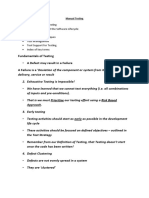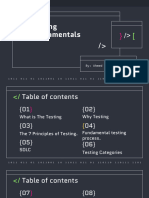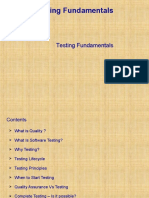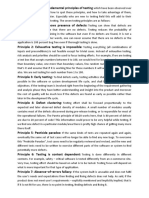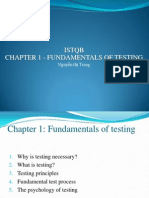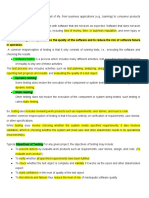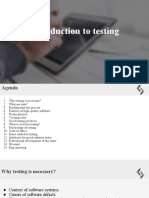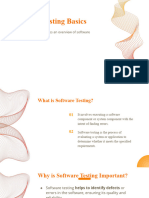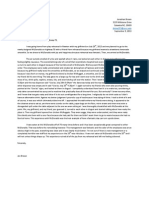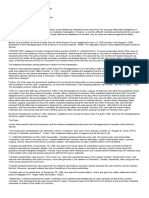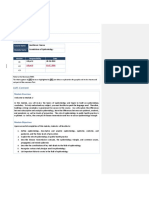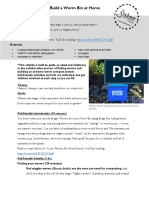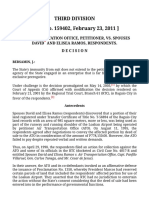0% found this document useful (0 votes)
46 views39 pagesSoftware Testing Fundamentals - Principles - 120922
The document discusses software testing fundamentals and principles including the seven key principles of testing, the fundamental test process, and the psychology of testing. The seven principles outline that testing finds defects but not all, exhaustive testing is impossible, early testing is important, defects cluster, tests become less effective over time, context is important, and absence of errors is a fallacy.
Uploaded by
200108059Copyright
© © All Rights Reserved
We take content rights seriously. If you suspect this is your content, claim it here.
Available Formats
Download as PDF, TXT or read online on Scribd
0% found this document useful (0 votes)
46 views39 pagesSoftware Testing Fundamentals - Principles - 120922
The document discusses software testing fundamentals and principles including the seven key principles of testing, the fundamental test process, and the psychology of testing. The seven principles outline that testing finds defects but not all, exhaustive testing is impossible, early testing is important, defects cluster, tests become less effective over time, context is important, and absence of errors is a fallacy.
Uploaded by
200108059Copyright
© © All Rights Reserved
We take content rights seriously. If you suspect this is your content, claim it here.
Available Formats
Download as PDF, TXT or read online on Scribd
/ 39


